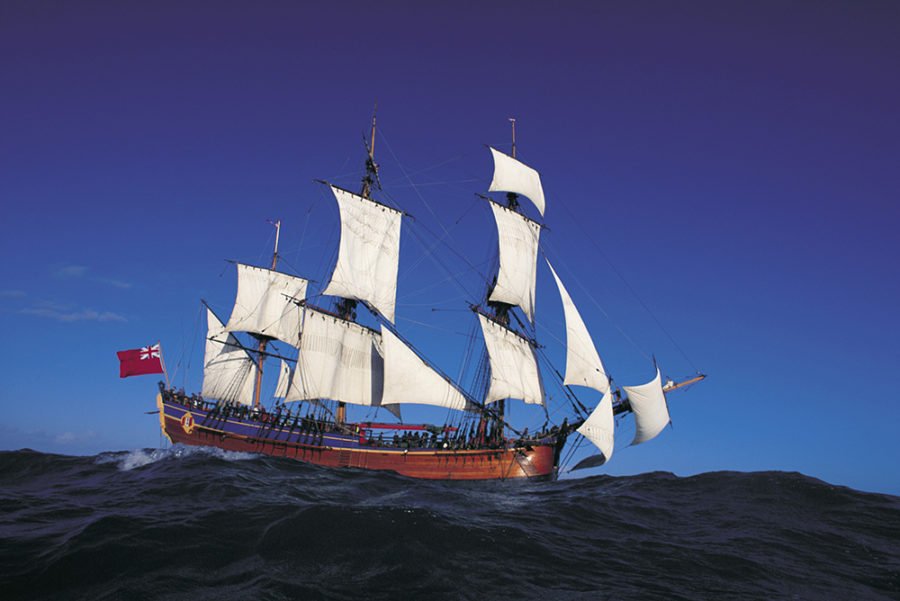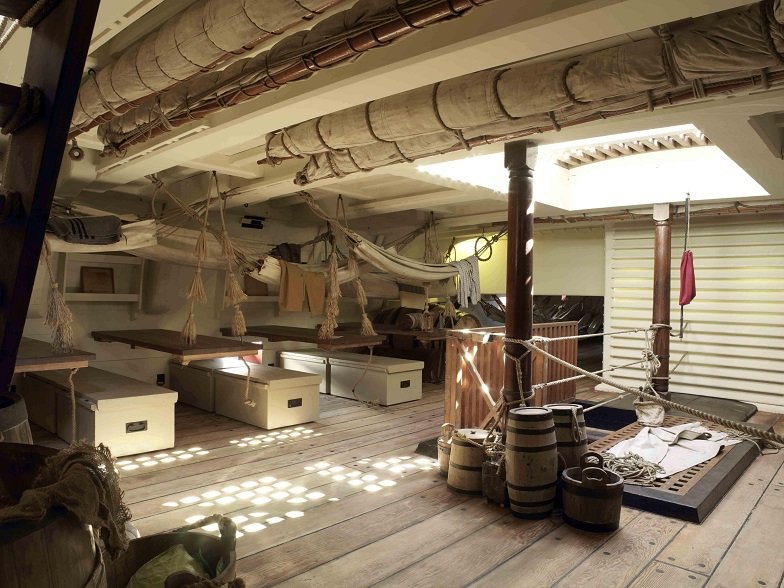Fight over the bones of Captain Cook’s Endeavour

JUST EIGHT YEARS after Captain James Cook first sailed the Pacific seas, HM Bark Endeavour was sold, scuttled and sunk without a trace. This week, US marine archaeologists claimed to have discovered her remains in Newport Harbor, Rhode Island – but what will become of our most famous ship?
In her glory days, the Endeavour helped Cook circumvent the globe, map the south-west Pacific and claim Terra Australis Incognita in the name of the Crown. But by 1778, the ship – then renamed the Lord Sandwich – was all but forgotten, loaned out by the British Navy, and purportedly scuttled during the American War of Independence.
Now, 238 years later, researchers with the Rhode Island Marine Archaeology Project (RIMAP) are “80 to 100 per cent” certain that the Endeavour is one of 13 shipwrecks at the bottom of the Newport Harbor.
“The Endeavour holds a hugely significant role in Australian history, for better or worse,” said Kieran Hosty, manager of the Maritime Archaeology Program at the Australian National Maritime Museum (ANMM).
“Obviously, it was the ship that brought Cook to chart the east coast of Australia, leading indirectly to European occupation and the dispossession of Aboriginal land. But then it passes out of history, working as a troop ship and then as a prison ship. And is now, in its own right, a fantastic archaeological site.”
RIMAP has been diving and surveying the 13 wrecks over the past 20 years, with Kieran and the ANMM joining the team in 1999. New archival research revealed that the former Endeavour was one of five vessels (used as defensive batteries) that sank off Rhode Island in 1778 – further narrowing the search, from about 5 sq.km to less than 100m.
The team hopes to unveil its true identity by 2020, to coincide with the 250-year anniversary of Cook’s charting of Australia. But years of neglect, poor visibility and an active harbour life won’t make the process any easier.

18th century mess deck recreated aboard replica HMB Endeavour. (Image courtesy Australian National Maritime Museum)
Luckily, the Endeavour appears to be the largest of the wrecks. It’s now a matter of looking at the size of the timbers, timber sampling to eliminate US-built vessels and studying any artefacts recovered.
“We already know a lot about how the Endeavour was built, it being the most studied vessel in Australian history,” said Kieran. “We know it was a prison ship, and that it carried German troops at one stage. So we’ll be looking for any artefact material, hoping to build a bigger picture from many different sources before we can say, ‘Yes, this one is the Endeavour‘.”
The discovery would put an end to years of speculation about the ship’s final resting place.
The Endeavour adventures on
What now for the Endeavour? The ship, so important in Australian history, was discovered by US researchers and in American waters. If it is raised, where should it be displayed?
“It’s certainly a big debate,” said Kieran. “Obviously I can understand the Australian perspective but, in fact, we’re looking at multiple layers of maritime history: the Endeavour was a British vessel, with links to the US, New Zealand and the Pacific Islands also. Legally, [Australia] doesn’t have a claim to the ship, it belongs to the state of Rhode Island.”
RIMAP has a strong preference, Kieran said, for the Endeavour to remain in Newport and used to form a museum, either on the sea floor or on land, depending on funding.
“We’d love to have any relics found come to Australia on loan,” he said. “But the chances of actually recovering artefacts on board [related to Cook’s voyage] are very slim.”
So, how does it feel to look at such a ship up close?
“It’s incredibly exciting,” said Kieran. “Even if it’s not actually the Endeavour, you’re still looking at a vessel from the 18th century. It’s like stepping into your own time machine, it’s pretty breath-taking.”
Endeavour timeline:
1764
Built in Whitby, Yorkshire. Initially named the Earl of Pembroke, the Endeavour begins service as a collier on England’s east coast
1768
Purchased by the British Admiralty, fitted for scientific voyage to South Pacific, rechristened the Endeavour. Departs from Plymouth in August
1769
Cook observes the transit of Venus; claims Huahine, Bora Bora and Raiatea for Great Britain. First European vessel to reach New Zealand since the Heemskerck in 1642
1770
First European ship to reach Australia’s east coast; Cook goes ashore at Botany Bay, claims Terra Australis Incognita for Great Britain. Run aground at Great Barrier Reef
1771
Returned to Dover, 12 July. Refitted by Admiralty as a store ship for voyages to the Falkland Islands
1775
Sold out of the Royal Navy for £645, makes single commercial voyage to Russia
1776
Deemed “unfit for service,” renamed the Lord Sandwich, hired to transport British troops and German Hessian mercenaries to New York during American Revolution
1777
Used as a prison ship in Newport
1778
Strategically destroyed by British Forces in blockade during French invasion of Newport, 4 August

